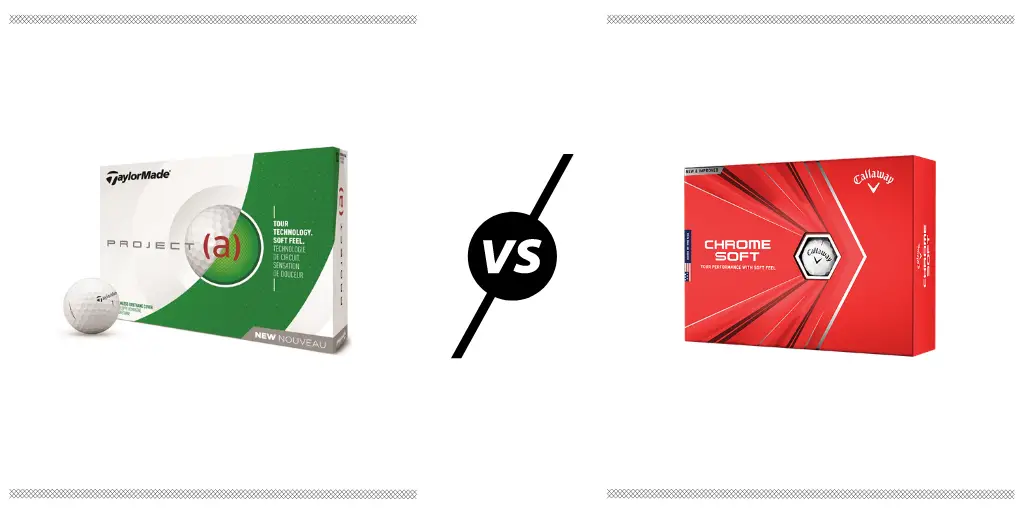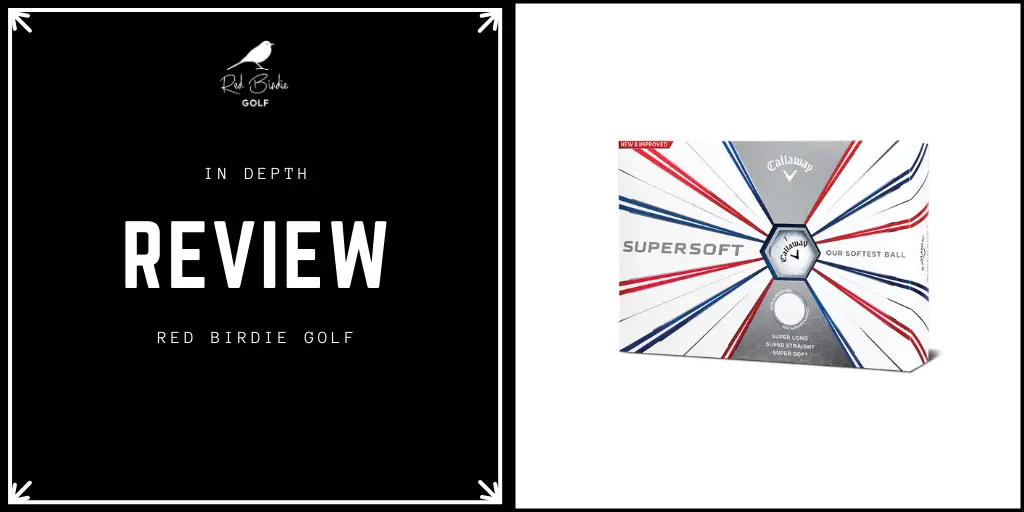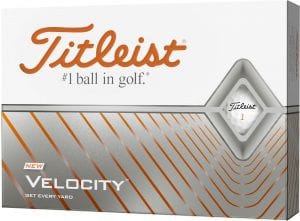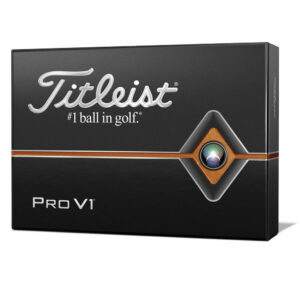Best Golf Balls Reviewed For 2021
***If you’re looking for the most recent reviews for 2021 gear, we will be updating this page in the summer after we’ve had a chance to review them!
If you’re in a hurry and just want to know our top choices for 2021, here they are:
Best Overall – Titleist Pro V1
Best Golf Ball for Beginners and High Handicappers – TaylorMade Noodle Long and Soft
Best For Low and Mid Handicappers – Titleist Tour Soft
Best For Seniors – Titleist Velocity
Best For Women – TaylorMade Kalea
Best Cheap Golf Balls – TaylorMade Noodle Long and Soft
To get more in depth on how these golf balls faired against the competition for a particular category or any other golf ball review, just click on the articles below:
Best Golf Balls in 2021 Reviewed
TaylorMade Noodle Long and Soft
A 2-piece ball with a low compression core, the TaylorMade Noodle Long and Soft provides similar distance and softness to some of the more expensive, multi-layered golf balls.
The low compression core helps to provide great distance while the dimple design leads to a penetrating ball flight and the spin rate is very high. The Noodle has long been a sought after golf ball by low and high handicappers alike. While it cannot provide the feel, spin, distance, and everything in between that some of the more expensive balls can, it comes pretty close. The only real weakness of the ball is around the green where you miss some of the feel and extra spin of the more expensive balls. Any list of the top, inexpensive golf balls will always have the TaylorMade Noodle, and that is because of its combination of price and quality. It was not a difficult decision to make this ball our choice the best golf ball for high handicappers and best inexpensive golf ball.
Pros
- They are about $1 per ball.
- The low compression core leads to better distance and feel.
- The dimple design is great for a more penetrating ball flight.
- A high spin rate helps players with slower swing speeds to get the ball to carry.
- Is forgiving off of the tee and with longer irons.
- Lands soft on the green because of the higher ball flight and increased backspin.
- As long as most of its more expensive counterparts.
- A great ball for a great price.
Cons
- You lose some spin and playability around the greens.
- It is harder to control and shape your shot.
Titleist Tour Soft
When you think of golf balls, you think of Titleist. They have always been on the cutting edge of high end golf balls.
The 2020 version of the Titleist Tour Soft is as soft on the green as ever, and this year’s version has some added distance that many will appreciate. While it does not offer the green side spin or the distance that the Pro V1 has, the playability of this golf ball at its price point is one of the best. If you like the Titleist name and quality, but do not want to spend the money for the Pro V1, the Tour Soft is a good ball at a lower price point.
Pros
- An expanded core adds both distance and spin around the green.
- One of the softest landing balls on the market.
- Offers the softest feel at its price point.
- An updated dimple design improves the ball flight.
- A really good golf ball for your short game.
- The sidestamp offers a good putting alignment tool.
- A penetrating ball flight and trajectory with a very consistent flight.
Cons
- A little more expensive than other golf balls with similar features.
- Not as explosive when it comes to distance as the other balls in its price range.
Titleist Velocity
As you can probably tell by the name, the Titleist Velocity golf ball focuses on ball speed and launch height while producing as little spin as possible.
This decrease in spin increases distance, but it also affects spin around the green. While the higher launch and subsequent steeper descent help the ball land softly, the closer you get to the green the more the lack of spin and feel affects your game. We chose the Velocity as the best golf ball for seniors because of the extra distance and decreased spin.
Pros
- Extremely low spin to maximize distance on every shot.
- The new cover provides additional durability and comes in multiple colors.
- It is a solid, soft core that produces great initial ball speed.
- The aerodynamic cover allows the ball to cut through the air with a penetrating ball flight that is not held back by wind.
- A good price point for a really long ball.
- Very straight and consistent.
Cons
- The focus on low spin takes away performance and feel around the green.
- The 2 part construction negates some of the recent golf ball technology.
TaylorMade Kalea
Kalea is a performance line of golf equipment made specifically for female golfers, one of the first of its kind. These golf balls have a compression rating of 60 and a 342 dimple ionomer cover helping to make the ball long and soft with a penetrating ball flight.
The high energy core is big and bounces off of the driver with a lot of energy. This club was designed for slower club speeds and more distance, but it also performs well around the green, especially compared to other soft golf balls.
Pros
- Maintains great distance and softness even at a slightly higher compression rating than many of the other balls on the list.
- A great value for the price.
- Has slightly better spin around the green than many of its competitors in the soft ball market.
- The dimple design provides a straight and penetrating ball flight.
- Designed for the women’s game.
- The high energy core provides great distance.
- The Iothane cover is soft but also catches well on the green.
Cons
- The 2-piece construction limits its ability to be both long and good around the greens.
- Difficult to shape shots because of the lack of spin.
Titleist Pro V1
The Pro V1 is the gold standard of golf balls and it really has been since it was introduced to the golf world. In fact, the Pro V1 became the no. 1 ball in golf in 2001, almost overnight.
It has, subsequently, been the best-selling ball in golf every month since March of 2001. The reason is that it has great feel, promotes top notch distance, and has a low spin rate from the tee and a high spin rate around the greens. Basically, it is the no. 1 ball in golf because it does everything well. The soft urethane and elastomer cover has great feel at impact. It is not so soft you think you are hitting a sponge nor is it so firm that the ball feels like a rock. The compression rating is 90 which is a mid compression making it better for players with higher swing speeds. The Pro V1 also has a mid trajectory but it is on the lower side of that designation. The ball flight is penetrating and strong, and the lower trajectory sets up well for lower handicappers and those who find it easy to get the ball of the ground.
Pros
- Long distance, great greenside spin and feel, and a penetrating ball flight all make for a really good golf ball.
- Reduced long game spin promotes distance and accuracy while the short game spin and feel are as good as any ball you will find on the market.
- The urethane cover is soft and durable and provides great feel off the tee and around the green.
- The compression rating of 90 means that it is not too soft and not too firm, but right in the middle of what most golfers want.
- The Pro V1 has been the no. 1 ball in golf every single month for 20 years now and it shows no signs of stopping.
Cons
- 3 piece construction limits it slightly compared to the 4 and 5 layered golf balls on the market today.
- Not as soft as some of its competition.
- One of the most expensive balls on the market.
TaylorMade TP5
The TaylorMade TP5 golf ball is a complete tour model ball. With its 5-layer construction, the TP5x can boast great distance and ultimate softness and spin around the green.
The TP5 is very workable and produces high spin and a mid trajectory ball flight. If you work the ball around the course and want high end softness around the green, there are not a lot of golf balls out there better than the TP5. The trifast core was introduced in 2017 and features an extremely low compression inner core with progressively stiffer outer layers. The dual spin cover on the TP5 allows for maximum driver and iron distance without losing feel and spin around the green.
Pros
- Great for working the ball around the course.
- One of the softest balls on the market while maintaining high end distance and a mid trajectory ball flight.
- The progressive compression allows for workable spin rates and great softness while maintaining great distance for your long irons and driver.
- The dual spin cover interacts with wedges for great spin while jumping off of your driver for better distance.
Cons
- Not as long as some of the other golf balls out there.
- Better for lower handicap players because of the spin rate.
Callaway Chrome Soft
The Callaway Chrome Soft is Callaway’s answer to the Pro V1. It hit the market in 2015 and is in its 3rd generation construction right now.
The Chrome Soft is a 4-piece golf ball with an ultra soft urethane cover that has a feathery soft feel. It is a mid compression ball just like the Pro V1, but with a noticeably lower compression rate of 75 (compared to 90 for the Pro V1). The Chrome Soft now features a graphene infused core which is both larger and softer than ever and promotes additional ball speed, a higher launch, and a lower spinning ball. All of these things together help to ensure that the Chrome Soft is long and straight off the tee, and it especially adds distance to players with sub-95 mph swing speeds. The additional size of the inner core also allowed Callaway to make the urethane cover even thinner without losing the softness for which it is known. Another major difference between the Pro V1 and Chrome Soft is that the latter is a 4-piece golf ball while the Pro V1 features 3-piece construction. This added “mantle” layer of the golf ball helps to ensure a low spin and high speed with the driver and distance clubs while adding spin and softness around the green. There is a reason that the Chrome Soft is becoming more and more popular in the golf ball world, and especially for mid handicappers and lower. The soft feel combined with great distance and low spin give it some of the main features that golfers are looking for.
Pros
- It has a much softer feel than the Pro V1, its main competition, because of the soft cover and lower compression rate.
- The 4-piece construction allows for an incredible combination of feel, distance, and spin that is hard to match.
- The urethane cover is very soft but it is also one of the most durable high end balls on the market.
- The graphene infused core is larger and easier to compress than ever which promotes less spin, more distance, and a high launch.
Cons
- The lower compression rating will turn many top golfers off at first glance.
- It is a really good golf ball for players with sub-95 mph swings which does not include a lot of younger golfers or low handicappers.
Callaway Warbird
Another 2-piece ball that focuses on distance, the Warbird has a firmer and more energetic core than most 2-piece balls and a very aerodynamic dimple design.
This ball is designed to get up quickly, fly high and straight, and add that extra distance that so many golfers are looking for today. While the core is firmer, it is also larger which increases the compression and the energy produced by the core. This is a very long golf ball.
Pros
- A firmer core than most of the other balls on this list.
- A very large core that gives it more energy and compression even at a greater firmness than most.
- The ionomer cover is very thin which provides more feel and allows for the larger core.
- The dimple design and thinner outer layer provides greater aerodynamics and allows for a penetrating and straight ball flight.
- Produces low spin even with a higher ball flight.
- Two colors to choose from that are both pleasing at setup and the yellow ball is very easy to find in the trees.
- Very high ball speeds make it suitable for even slow swingers.
Cons
- More expensive than most 2-piece golf balls.
- Very little spin and feel around the greens.
Bridgestone Tour B XS
The Tour B XS golf ball from Bridgestone is one of the best all-around golf balls on the market. The Tour B XS is such a good golf ball that it is what Tiger uses along with many other Tour Pros.
As a general rule, ball manufacturers create 2 balls in their high end category. The first golf ball is the soft, high spin, great feel players model. The second is the low spin, high launch, increased distance model. Generally they separate the 2 into the normal version and the “x” version and you know that you are either sacrificing distance or feel when you choose one golf ball over the other. The new Bridgestone “Reactiv” technology is changing that paradigm. The goal is to create a golf ball that gives you a high spin rate and soft feel without losing any distance. Every good golf ball company advertises that they have accomplished that goal, but when it comes down to it, you have to choose. Bridgestone believes that their “Reactiv” technology has allowed them to do just that.
Pros
- Produces high spin rates.
- A great ball around the green.
- Very workable for drawing and fading shots.
- The Reactiv cover showed improvement regardless of skill level and golf ball.
- A shorter compression time off the driver face.
- A longer compression time with irons and wedges.
- One of the best combinations of spin and distance on the market.
- Great for lower handicap players and Tour Professionals.
- One of the best spin rates on the market.
- Maintains total distance that is as good or better than any ball out there.
Cons
- Not as good for higher handicap players and beginners.
- Total distance is as high as any ball on the market, but the increased spin may make it difficult for players who are not as accurate off the tee.
- Not as straight as some of the other options out there.
Callaway SuperSoft
With a compression rating of 35 and a soft trionomer cover, the Callaway Supersoft performs well in the 2 things most golfers are looking for: distance and forgiveness.
Its 2-piece construction with a low compression core keeps it soft while jumping off long irons and woods. Most beginners and high handicappers do not feel the difference in the spin or playability of the ball around the greens, but need a high launching ball that gives some added distance and this ball does just that. This is one of the softest balls on the market and it produces a very low spin rate. The ball penetrates through the air and has great carry. On top of that, this is a very forgiving ball that will not spin off into the woods easily. If you struggle with a hook or a slice, the low spin rate of the Supersoft will help.
Pros
- This is a great ball for players with a slower swing speed.
- The compression rating is the lowest on this list.
- Lands softly on the green and has a true roll.
- A very low spin rate makes for longer and straighter shots.
- Includes features that aid in alignment and setup.
- “HEX” aerodynamics give it more ball speed and carry.
Cons
- Definitely a “game improvement” ball designed more for beginners.
- Does not spin or stop on shots around the green.
Features To Look For in The Best Golf Balls
Spin
Spin is a simple concept, but it can be a difficult aspect of your game to figure out. In general, if you have a slower swing speed, you want more spin on your ball because increased backspin makes the ball carry. If you swing harder, you do not need the back spin to get your ball to carry, and it may even cause you to lose distance because of a higher ball flight. You also want a ball that you can get a lot of back spin on around the green so that it will stop or bite when you need it to.
Distance
Distance is becoming more and more important in the game of golf. Getting the ball down the course and setting yourself up for a shorter approach is the name of the game. Golf ball manufacturers have seen this trend and have put most of their marketing and research into producing as much distance as possible. Even inexpensive balls on the market today will help to provide the distance you are looking for. The key, however, is to find the best combination of distance, feel, and spin and there are some balls on the market that can help your game in all of these categories.
Feel
Generally speaking, higher end golf balls have a urethane cover that makes them softer and gives them a better feel. The distance is created with core technology and multiple layers so that you get the best of both worlds, distance and feel. Less expensive balls usually use an ionomer cover. The ionomer is a much harder cover but it helps to provide distance while giving you less spin and shot movement. Many of your lower end golf balls will be fine for distance and will probably have a low spin rate, but you will lose out on feel.
Durability
The durability of a golf ball is not only about how long it will last without falling apart. A durable golf ball is one that does not lose its feel, spin rate, or distance quickly but you can use it for multiple rounds. If you are buying expensive golf balls, you want them to last, so durability is important.
Construction
The construction of a golf ball speaks to all of the features above. The number of layers, the type of cover, the dimple pattern, the compression rating of the core, and other factors all come about because of the way a ball is constructed. It is important that you do your research on the golf balls you purchase and make sure you are paying for the quality of construction you are receiving.
Accuracy
Accuracy and spin go hand in hand. A ball that travels straighter will generally be more accurate unless you know how to work the ball around the course. On top of that, you want a ball with a consistent ball flight and performance so that you know where it is going with each swing.
Expensive, Cheap, Or Used?
There are 2 types of golfers in the world. The first is the type of golfer that hits a lot of fairways off the tee, is disappointed when he does not reach the green in regulation, and can generally control his golf shot. This type of golfer would benefit from a little extra technology in their golf ball. It could be the difference in a few yards off the tee or that extra draw that you need to get the ball where you want it.
The second type of golfer ends up in the woods a lot, is thrilled when he has a 40-foot birdie putt once a round, and has little to no control over his golf shot. This type of golfer would not benefit from extra technology in their golf ball because the only thing that can help him is to play a lot more golf. If you are the second type of golfer…Use Cheap Golf Balls! You are just going to lose them anyway. Whether it be water, woods, or the backyard of the nice couple who decided to build their home on a golf course, you are going to lose a lot of balls every round so spend accordingly.
Final Thoughts on The Best Golf Balls in 2021
Your golf ball is the one piece of equipment that you use every single time you swing a club, no matter what club. As such, consideration and thought should be put into the type of golf ball that you use. The better you get, the more concerned you should be with golf ball technology because it can really improve your results. If you are just getting started, do not be overly concerned with spending a lot of money on golf balls, just get out there and hit. On the other hand, if you have been playing for a while, a good golf ball can add distance, feel, and better scoring to your game.





























